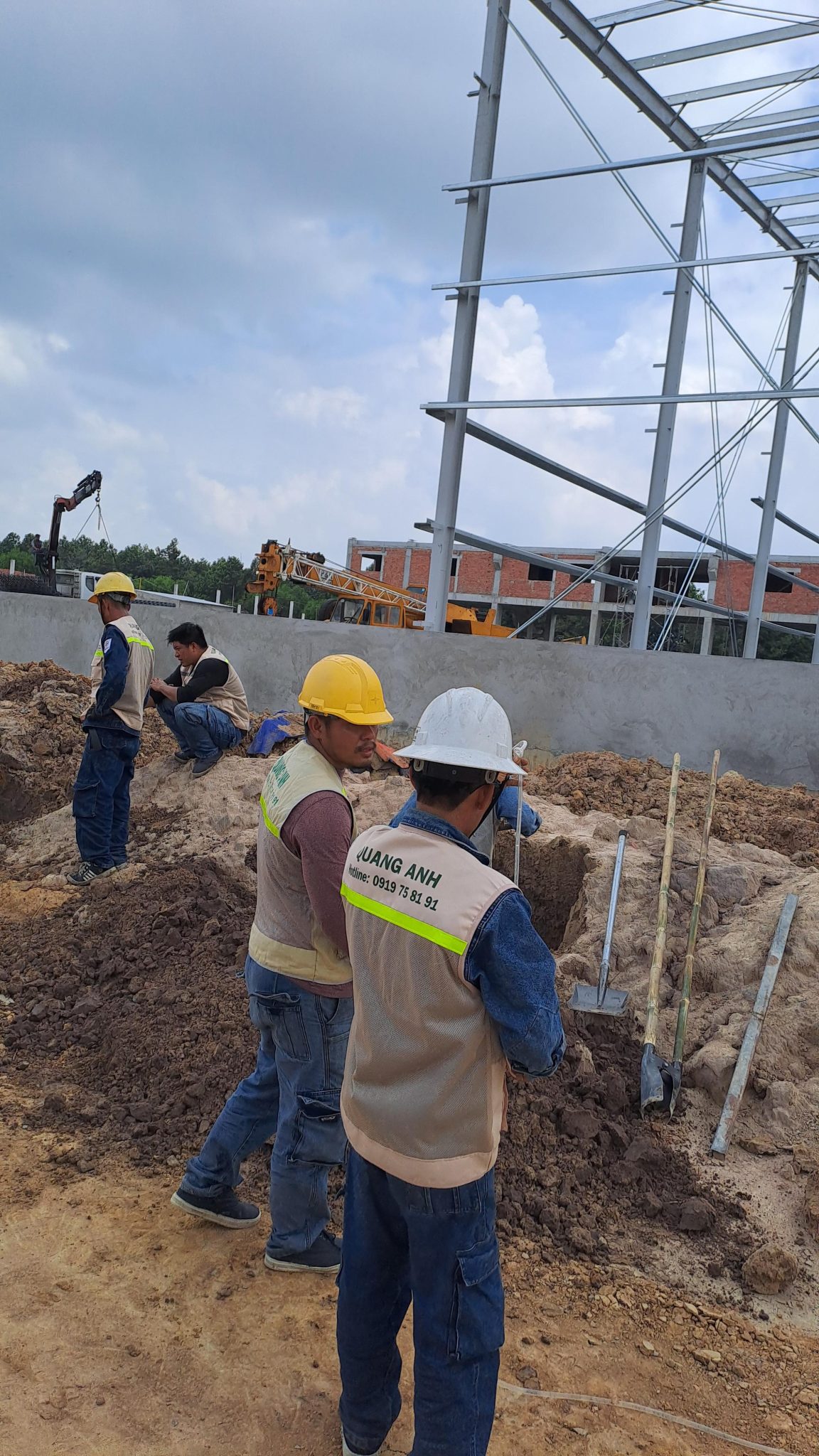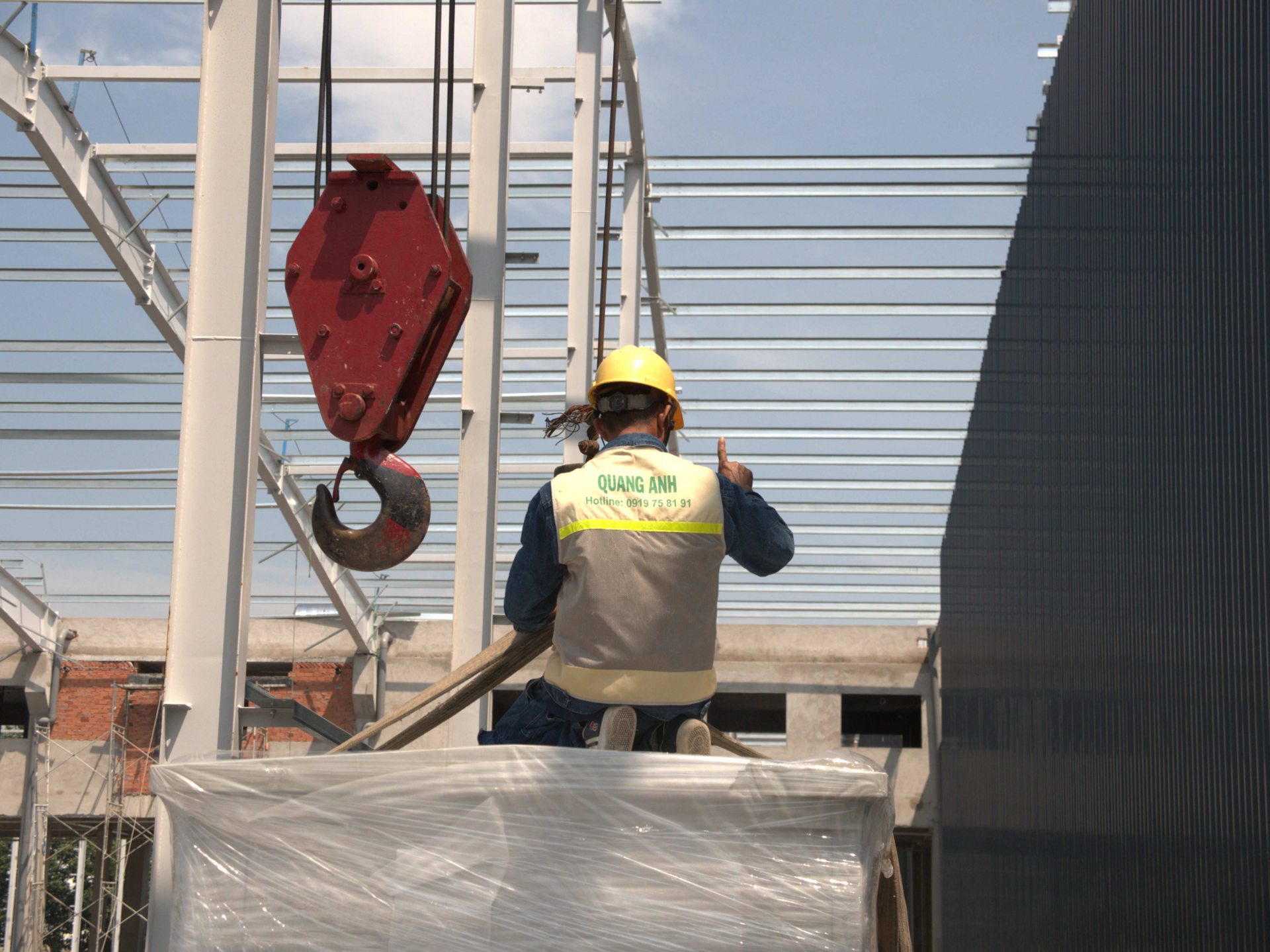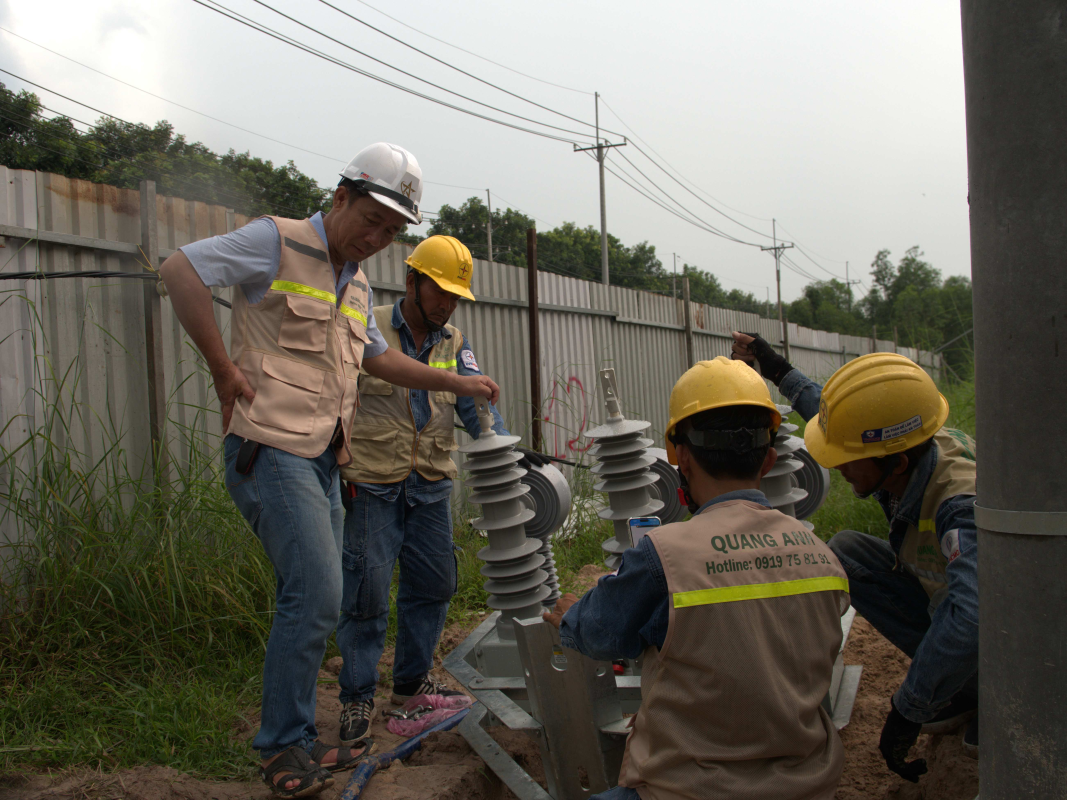In Vietnam, solar installation costs fluctuate significantly due to system capacity, equipment type, and electricity needs, especially from 2025 onwards.
Residential Solar Installation Costs
The cost of installing solar panels for households varies with system capacities from 3 kWp to 10 kWp. Prices include equipment and rooftop grid integration. Hybrid systems are pricier; for instance, a 3 kWp hybrid system ranges from 60-65 million VND. Each kWp can produce approximately 4-5 kWh per day, needing about 6-8 m² of roof space per kWp.
Installing solar power is increasingly popular as it reduces costs and benefits the environment. For both businesses and families, understanding costs and related factors is crucial.
Installation Pricing
- 3 kWp: Installation around 35 – 45 million VND, generating about 360 kWh/month.
- 5 kWp: Cost ranges from 50 – 75 million VND, producing approximately 600 kWh/month.
- 10 kWp: Installation costs 90 – 150 million VND, with potential output of 1,200 kWh/month.
Factors Affecting Installation Costs
Solar panel costs are influenced by multiple factors:
- System Capacity: Larger systems need more equipment and space, raising total costs.
- Type of Equipment: The brand and quality of panels and inverters, like those from ABB, Schneider, or Mitsubishi, significantly impact cost.
- Installation Location: Sunlight absorption and electricity output can vary based on geography.
- Roof Structure: Roof style and material may necessitate specific installation solutions.
Recommendations for Households
Families should consider a grid-tied or hybrid system if their monthly electricity bill exceeds 1.5 million VND. Selecting a capacity that matches consumption needs is important.
Benefits
Solar power installation offers numerous advantages:
- Reduces monthly energy costs.
- Contributes to environmental protection through renewable energy use.
- Boosts property value with modern solar power systems.
Investing in solar power systems allows any business or household to enjoy long-term energy savings.

Commercial Solar Costs
Commercial solar system installations vary from 10 kWp to 50 kWp, priced between 110 – 650 million VND depending on scale. Average investment costs range from 8.5 million to 16 million VND per kWp. These systems are commonly adopted by enterprises and farms, leading to significant annual electricity savings and emission reductions.
For many companies in Vietnam, investing in solar power is becoming increasingly attractive—not just for cost savings but also for enhancing their green company image. Grid-tied solar systems allow organizations to independently manage their energy usage, reducing reliance on traditional grid electricity from EVN.
Investment Costs Factors
Investment Cost (CAPEX)
- Investment Unit Price: For systems under 500 kWp, costs range from 15 to 19 million VND per kWp. Larger systems over 500 kWp may reduce costs to 14 to 17 million VND per kWp.
- Real-world Example: A 50 kWp system might require an investment of about 800 million VND, while a 300 kWp system might demand around 4.5 billion VND.
- System Size: Electricity output correlates linearly with roof area. For instance, a 300 kWp system needs over 2,000 m² roof space to produce 36,000–45,000 kWh monthly.
Electricity Output and Savings
- Electricity Savings: Solar energy use can decrease operational costs by 70 to 90%, especially effective for businesses operating during peak electricity times.
- Excess Electricity Sales: Surplus electricity can be sold back to EVN at 2,134 VND per kWh for 20 years.
- Cost Reduction: A 5 kWp system saves on average 2.3 million VND monthly, approximately 28 million VND yearly, potentially returning the investment in 4 to 6 years depending on scale and usage.
- Emission Reduction: Solar power systems help reduce greenhouse gas emissions, reinforcing green business status.
Estimated Payback Potential
| Size of System | Investment Cost (million VND/kWp) | Payback Period | Expected Electricity Savings |
|—————–|——————————|——————–|————————-|
| <500kWp | 15–19 | 4–6 years | 70–90% annual costs|
| >500kWp | 14–17 | 3–5 years | Higher due to scale economies|
Additional Benefits Beyond Cost Savings
- Cooling Effect: Solar panels not only generate electricity but also reduce roof temperatures.
- Stable Electricity Prices: Solar power is immune to fluctuations in wholesale electricity prices, offering businesses price stability.
- Long System Lifespan: With regular maintenance, solar systems can last between 25 to 30 years, making it a long-term investment.
Key Investment Considerations
- Roof Area: Determines system scale and efficiency.
- System and Equipment Quality: Directly affects system performance and durability.
- Legal Policies: Must be carefully reviewed, such as rooftop leasing incentives.
- Warranty and Maintenance: Choosing long-term warranty reduces unforeseen costs.
Investing in business solar systems not only provides economic benefits but also steps forward in environmental protection and enhancing green brand reputation. Factors like investment cost, roof space, and proper equipment choice will dictate effectiveness.

Factors Affecting Installation Costs
Factors Impacting Installation Costs
Elements that influence solar installation costs include system size, geographical location, solar radiation, and additional costs like transportation and maintenance. Larger installations usually have lower costs per kWp. High solar radiation areas enhance efficiency, shortening payback time. Grid-tied systems are less expensive than hybrid or storage systems.
When businesses consider investing in installations, cost-impact factors play a critical role in planning. Initially, material prices and types such as steel, cement, and sand frequently shift with the market. Choosing high or low-quality materials will directly influence total costs.
Construction Terrain can’t be overlooked. Complex terrains like weak soil or mountainous regions require extra foundation work, specialized equipment, and increased labor costs due to extended construction time.
It’s essential to consider project scale and design blueprints. Larger projects are associated with higher material and labor costs. Detailed blueprints, demanding special technical design, will raise total costs. For instance, embedding utility systems or installing specialty equipment can incur costs over 10% more.
Labor Costs depend on skill levels and work quality. While skilled labor might cost more, it ensures project quality and long-term safety.
Moreover, transportation distance of materials and personnel from suppliers to the site significantly affects costs. Projects far from central locations require additional infrastructure and transport investments.
Finally, construction technology strongly impacts costs. Utilizing advanced technology and equipment might increase initial costs but saves construction time and long-term maintenance expenses. Manual or outdated technology might be appealing upfront but poses maintenance challenges.

Solar investment provides benefits in cost savings and environmental protection. Businesses and households should consider factors like geographical location and usage needs to optimize system efficiency.
Contact QuangAnhcons for detailed solar installation advice. Hotline: +84 9 1975 8191
QuangAnhcons offers quality solar consultation and installation services, meeting energy saving and sustainable development needs.
[contact-form-7 id="7239967" title="Contact form 1"]


Related Posts
Tay Ninh Solar Power Planning: Technical Framework, Grid Interconnection, and Rollout Roadmap
Technical overview of solar planning in Tay Ninh: irradiation, grid capacity, permitting, design, operations, and [...]
Dec
Binh Duong Solar Planning: Regulatory Framework, Grid Interconnection, and an Implementation Roadmap for Factories and Industrial Parks
An overview of Binh Duong solar planning: legal framework, interconnection, design, risk management, and an [...]
Dec
Solar Farm Repair: O&M Workflow, IV Curve Diagnostics, Thermography, Inverter Service and Utility-Scale Safety
A utility-scale solar farm repair plan centered on O&M, IV curves, thermal imaging, inverter service, [...]
Dec
Dong Nai Solar Power Plan 2023–2025: Tri An 1,029 MW, Grid Upgrades and the DPPA Pathway
A complete look at Dong Nai’s solar power plan: Tri An 1,029 MW, irradiation potential, [...]
Nov
Quang Ngai Solar Power Plan 2024–2030: Legal Framework, Irradiance Potential, and Development Roadmap
A complete look at Quang Ngai’s solar power plan: capacity targets, irradiance (PVout), development zones, [...]
Nov
Solar Damage Assessment Services: On-Site Procedures, EL/IV/Thermography Testing & Compliance with Standards
Discover IEC/UL/NEC standard solar damage assessment processes: on-site evaluation, EL and IV curve testing, thermal [...]
Nov
Comprehensive Package Estimate for a 1800MVA 500kV Substation: Scope, Configuration 3x600MVA, Standards and Timeline Management
An overview of the 1800MVA 500kV substation estimate: construction scope, configuration 3x600MVA, GIS/AIS, SCADA, standards, [...]
Nov
Factory Electrical Systems: Comprehensive Design and Implementation Guide
Discover the detailed and safe process of factory electrical systems design and implementation. [...]
Oct
Blueprints Required for Factory Construction Permits
Discover the necessary blueprints in factory construction permit applications, from floor plans to electrical and [...]
Oct
What Are the Requirements for a Factory Construction Permit? A Comprehensive Guide
Explore the documentation and steps needed to secure a factory construction permit for streamlined project [...]
Oct
Factory Construction Permit Procedures in Vietnam: Essential Guidelines and Documents
Learn the procedures for securing a factory construction permit in Vietnam, focusing on document preparation [...]
Oct
Key Steps in the Factory Construction Process
Discover the essential steps and requirements for building factories. [...]
Oct
Comprehensive Electrical Substation Solutions by Quanganhcons
Discover the cutting-edge electrical substation solutions offered by Quanganhcons for industrial applications. [...]
Oct
Investment Costs for a 1MWp Solar Power System and Influencing Factors
Explore the investment costs for a 1MWp solar power system in Vietnam and the influencing [...]
Sep
QuangAnhcons: Elevating Wind Energy Solutions
Explore QuangAnhcons' leadership in wind energy and renewable solutions in Vietnam. [...]
Sep
Electrical Contractor Strategies at Becamex Industrial Park
Discover the strategic advancements and partnerships of the electrical contractor at Becamex Industrial Park. [...]
Sep
Investment Insights for 1MW Wind Energy in Vietnam: Costs and Opportunities
Discover the detailed analysis of costs and opportunities for investing in 1MW wind energy projects [...]
Sep
Advanced Electrical Installation Solutions by QuangAnhcons
Explore advanced electrical installation solutions and modern technology with QuangAnhcons. [...]
Sep
Enhancing Industrial Electrical Services with Quanganhcons
Discover Quanganhcons' expertise in industrial electrical services, offering efficient and sustainable power systems. [...]
Sep
Comprehensive MEP Solutions by QuangAnhcons: From Design to Maintenance Excellence
Discover optimal MEP solutions with QuangAnhcons, dedicated to excellence from design through maintenance. [...]
Sep